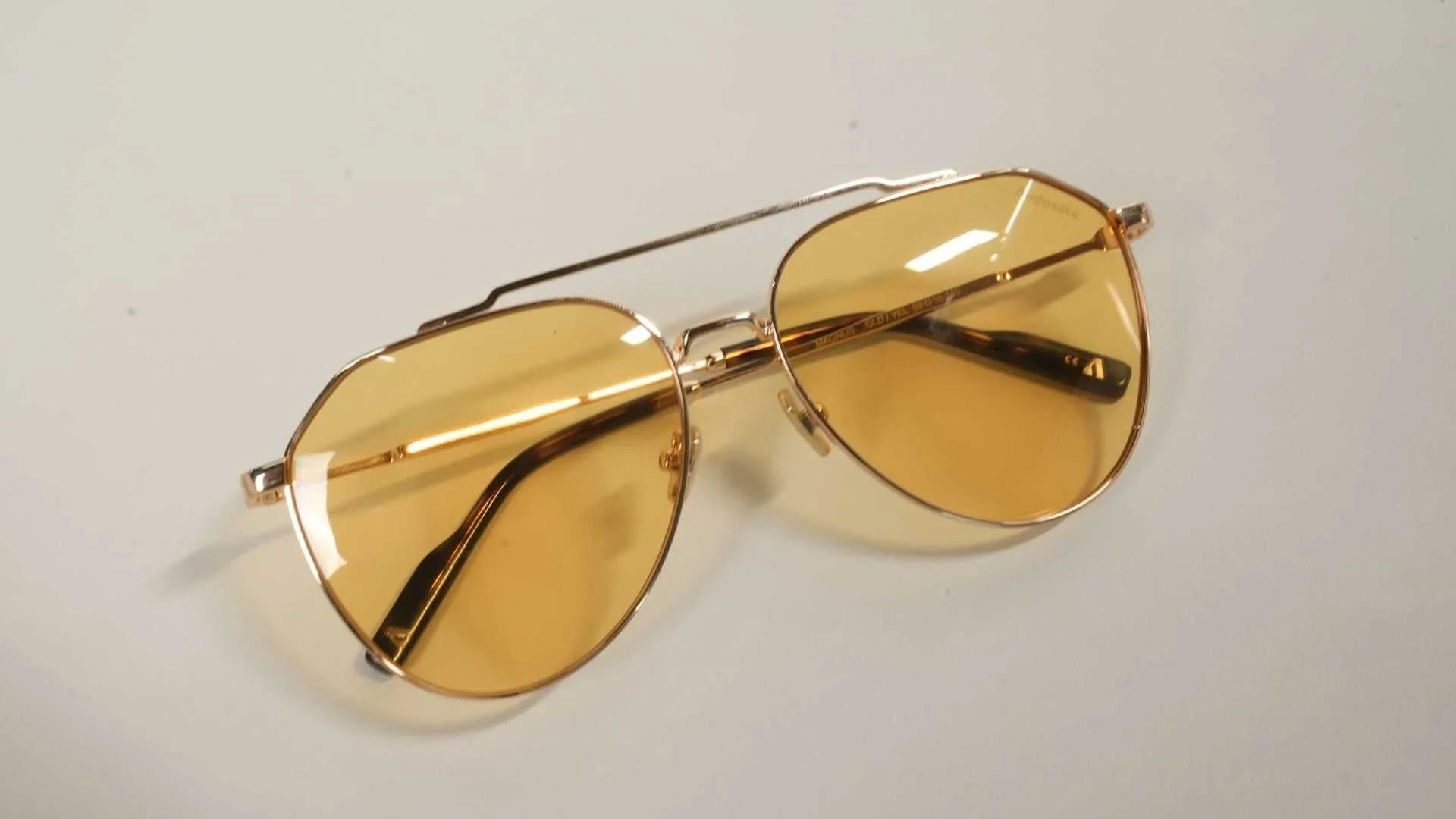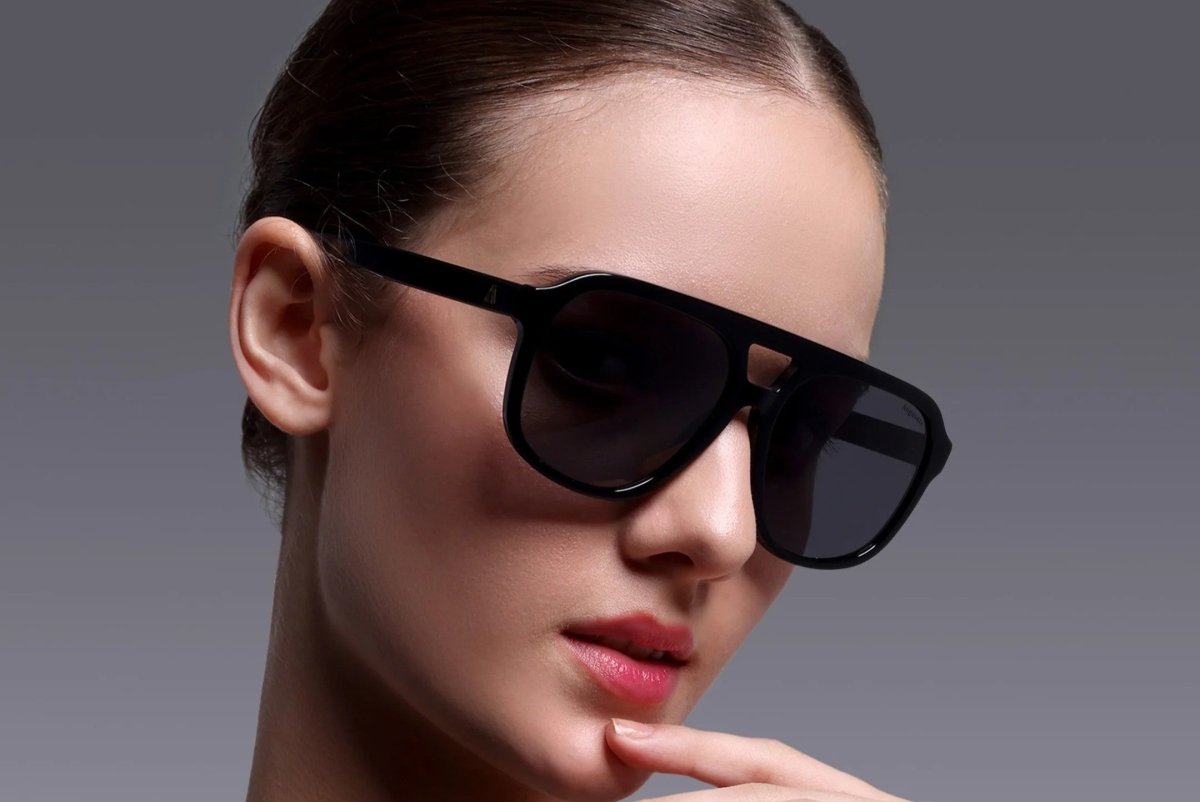Introduction: The Story Behind Every Frame
When each of us puts on a pair of glasses or sunglasses, we immediately notice the style—the color, the shape, the fit. However, what is most often not considered is what the frame has to go through before it even reaches you. Behind every pair of eyewear presented to you, an amazing process has taken place using elements of nature, design, and human ingenuity.
Eyewear is not simply "made." It is painstakingly crafted, shaped, formed, and polished in dozens of steps which are a delicate marriage of art and science.From raw acetate and metal to a polished piece of eyewear that glided across your skin, every inch is noticeable.
Think of it this way: When you put on eyewear, you are, in essence, wearing a story. A story of how the materials were sourced with care, of the fully assembled machinery and people involved, and of how many thought processes were considered to make the eyewear comfortable, durable and simply yours.
Eyewear is much more than appearance. It is a combination of craftsmanship, purpose, and engineering designed to make the object on your face feel as good as it looks.
Materials That Make Quality Eyewear
Bio-Acetate: Nature as the Foundation
Unlike plastics made from petroleum, bio-acetate is derived from renewable resources such as wood pulp and cotton fibers.
It has many benefits: Skin-friendly: smooth and hypoallergenic - offers full wearability..
Visually rich – capable of holding deep colors, layered tones, and subtle textures.
Environmentally considered – can biodegrade under industrial composting conditions, making it a more responsible alternative to common injection plastics.
Metal Alloys for Structure
For metal frames, aviation-quality alloys are always chosen for their strength-to-weight ratio. These alloys maintain their shape and are stable under stress, they do not corrode, they can be polished to a finish that reflects for many years.
The Small but Vital Details: Hinges
No frame is complete without strong, reliable hinges. Augussto incorporates German-engineered rivet hinges, which keep temples aligned and reduce loosening over time. While small in size, they play an essential role in durability and fit.
Precision Cutting: How Frames Take Shape
Once raw materials are secured, the transformation begins.
Laser-guided machines cut acetate blocks into frame fronts with sub-millimeter accuracy.
The precision ensures that lens openings are uniform, bridge measurements are correct, and both sides of the frame are symmetrical.
Consistency at this stage prevents discomfort later, since even slight errors can affect balance on the face.
Metal frames go through stamping and forming processes that shape sheets of alloy into curves and angles without compromising structural strength.
Crafting the Frame: Shaping and Assembly
After cutting, the rough frame pieces need sculpting. This stage gives the eyewear its character.
Temple shaping ensures the arms follow the natural curve of the head.
Hinge embedding secures the moving parts inside the acetate or metal with accuracy.
Bridge refinement allows the frame to sit evenly on the nose, distributing weight comfortably.
Each adjustment is made with both design and wearability in mind. The aim is not just to create a frame that looks appealing, but one that feels natural during extended wear.
Hand-Polishing: Where Eyewear Comes to Life
Polishing is where raw material becomes something refined. Machines can smooth surfaces, but they cannot replace the touch of hand-finishing.
Edges softened – ensuring no sharpness against the skin.
Surfaces smoothed – acetate reveals its full depth of color, while metals gain a lasting shine.
Irritation-free comfort – the inner rim and nose bridges are finely buffed so frames rest easy (remain un-irritating) on the wearer’s face.
This is a time-consuming step, and it may take many iterations of polishing. It is here that we get to the feel of a frame – how it feels in the hand, and how it feels on the skin.
Details That Define the Experience
Fit Geometry
The exact measurements of a frame directly affect comfort. For example:
-
-
Lens width: determines the balance of proportions on the face.
-
Bridge size: controls how securely the frame rests on the nose.
-
Temple length: influences whether the frame sits evenly across the ears.
-
Frames like the Caesar Obsidian are designed with 57–18–145 mm proportions, distributing weight evenly. The pilot frames such as the Magnus have a size of 58-17-145 mm that fit snugly while eliminating any excess pressure.
Subtle Improvements
Micro-beveling on the inside of acetate frames reduces internal glare.
Laser-etched monogramming, which provides an almost anonymous identifying mechanism, is used to make it clear that our myopia lenses are not branded.
Silicone nose pads and sculpted grips on metal frames make for additional comfort and enhanced grip during movement.
Sustainable Packaging and Safe Delivery
The journey doesn’t end when the frame leaves the workshop. Presentation and delivery are also considered parts of the process.
Protective cases guarantee the frame arrives in excellent condition.
Recyclable packaging helps minimize waste while still keeping our products secure and not damaged from shipping.
Bringing the frame directly to you avoids unnecessary handling, meaning the frame you receive is the quality intended.
Policies such as a 30-day return period or support for replacements add more assurance to your trust in our product.
Examples of Frames Through This Journey
-
Caesar Obsidian / Graphite
-
Crafted from Italian bio-acetate polished to a deep black finish.
-
Graphite-tone nylon lenses provide UV protection.
-
Balanced geometry prevents pressure build-up during long wear.
-
Aurelius Argent / Glacier
-
Round aviator design made from aviation-grade alloy.
-
Glacier-blue nylon lenses for clarity in bright sunlight.
-
Wire-brace core and sculpted grips enhance resilience.
-
Magnus Aurum / Sunset
-
Brushed gold alloy softened to reduce glare.
-
Gradient nylon lenses for smooth visual transition.
-
Ergonomic temples designed to follow natural head curves.
These examples demonstrate how the same process adapts to different design expressions, whether in acetate or alloy.
Why This Process Matters
The details described may seem small in isolation, but together they create the overall experience of wearing the frames.
Consistency – laser cutting and aligned hinges mean frames remain dependable over time.
Comfort – hand-polished surfaces and precise geometry prevent irritation and slippage.
Material honesty – bio-acetate and recyclable packaging reduce environmental footprint.
Confidence – each step, from sourcing to finishing, reflects a process designed to last.
Conclusion: Wearing the Result of a Journey
Every Augussto frame carries within it the story of its creation. From renewable cellulose acetate and engineered alloys to hours of polishing and thoughtful alignment, each step contributes something meaningful. When the frame has reached you, it is not only a functional object, it is also the outcome of patience, precision, and care.
Take a look at the collection - see design and detail come together in a variety of styles.
Understand the fit – recognize how measurements and geometry affect comfort.
Choose thoughtfully – frames are more than accessories; they are products of a process worth appreciating.
When you wear your frame, you are also wearing the journey that shaped it.









